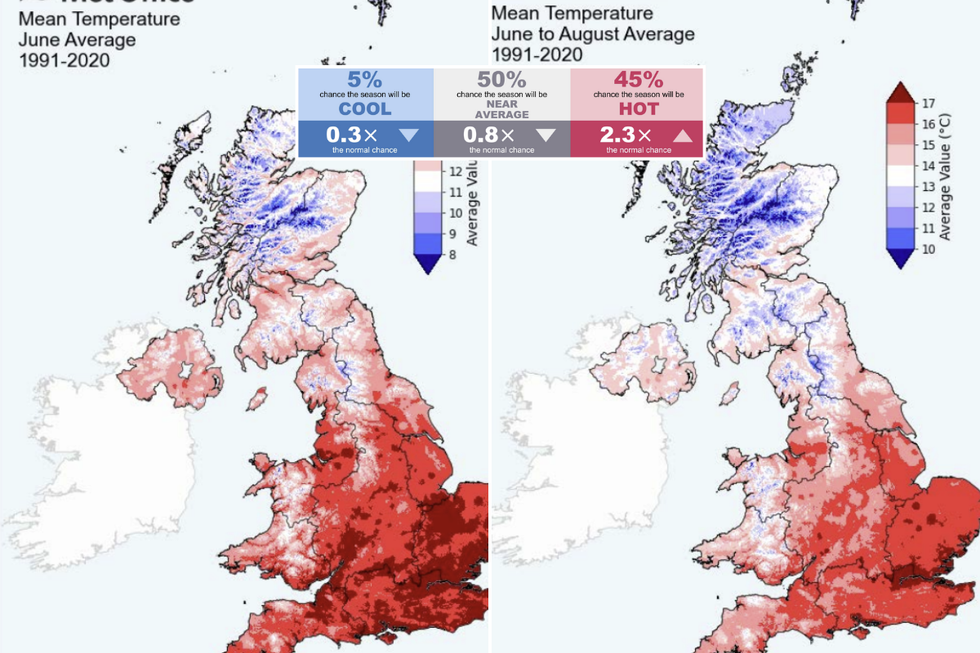Met Office warns Britons to expect summer of heatwaves with increased chance of hot blasts

Wildfires sprung up across the country with fire crews responding to 464 wildfires so far this year
Don't Miss
Most Read
Latest
The Met Office has warned that Britain is 2.3 times more likely to experience a hot summer this year, with an increased risk of heatwaves across large swathes of the country.
The forecast follows the UK's sunniest spring on record, with up to 630 hours of sunshine recorded between March 1 and May 27.
This has also been the driest spring for more than a century. Temperatures soared to eight degrees above average on Saturday, the final day of meteorological spring, signalling what could be a scorching summer season ahead.
The Met Office's three-month outlook shows heightened chances of hot weather during meteorological summer, which began on June 1 and runs until August 31.
Meanwhile, the forecaster suggests there is a 35 per cent chance June will be hotter than average.

The average temperature is set to be hotter than usual
|Met Office
Average temperatures across the UK during these summer months typically range from 10-17C, with the south-east of England experiencing higher averages of 16-17C.
The record-breaking spring saw some areas of the country clock up the driest conditions in 69 years.
In May, Britain experienced the hottest start to the month on record, with temperatures reaching 29.3C at Kew Gardens in south-west London.
This beat the previous all-time high for May 1 of 27.4C recorded at Lossiemouth in Moray in 1990.
The Met Office's outlook indicates that rainfall and wind speed levels for the next three months will likely remain near average, despite the increased temperature predictions.
LATEST DEVELOPMENTS

Revellers in London enjoying the sunshine
|PA
A Met Office spokesman said: "While the current three-month outlook shows an increased chance of a hot summer, the temperature signals for this summer are similar to those for recent years and consistent with our warming climate.
"The increased chance of hotter than average temperatures is not a guarantee of prolonged hot weather or heatwaves, but it does mean that heatwave conditions could be reached at times."
The spokesman continued: "However, it's important to bear in mind that an increased chance of hot conditions could also reflect a mix of hot and cool days, warm nights, or less extreme levels of warmth rather than continual heatwave conditions specifically."
The long-range forecast provides a broad indication of weather patterns over three months rather than identifying specific daily conditions.
The Environment Agency has warned that England faces the risk of summer drought after the driest start to spring in 69 years led to low reservoir levels, struggling crops and wildfires.
Some parts of England have already been declared in drought, with the north-west experiencing declining groundwater levels and river flows.
The London Fire Brigade (LFB) reported a 32 per cent increase in water-related incidents in April compared with the same period last year.
In the first quarter of 2025, LFB crews responded to 160 water-related incidents, averaging more than 13 per week.
Fire and rescue services in England and Wales have responded to 464 wildfires so far this year.











